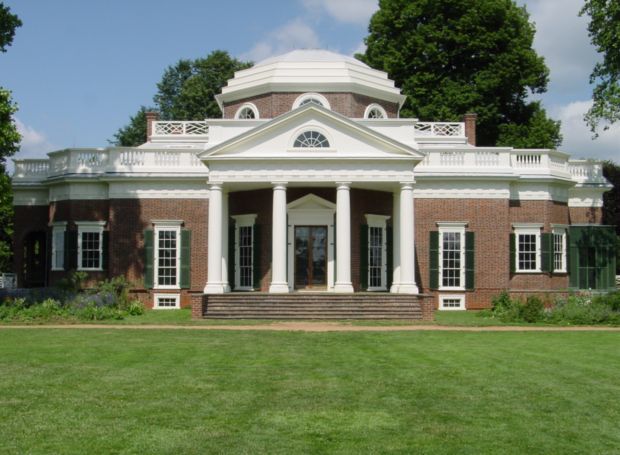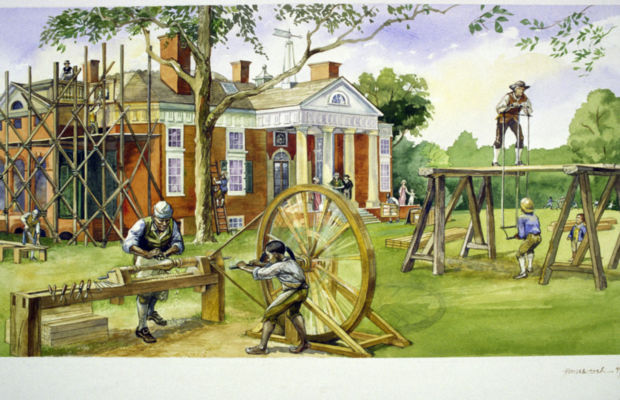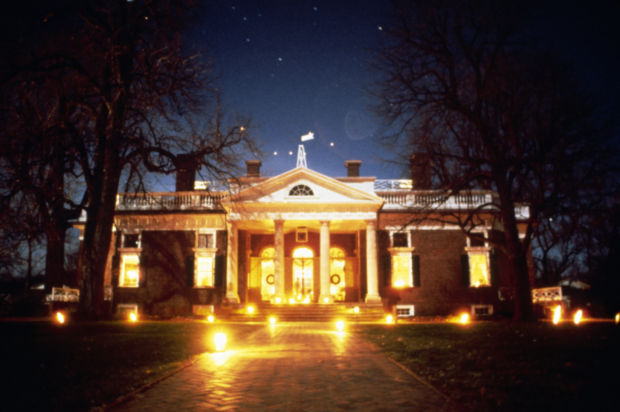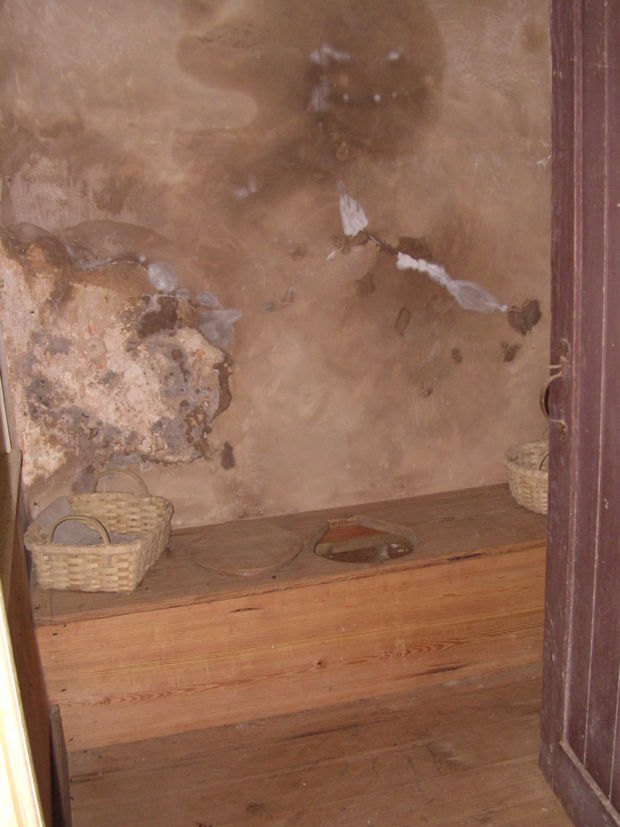FAQ Monticello Architecture
Reading Level: Elementary School
What is the architectural style of Monticello?
Monticello is a good example of Roman neoclassical architecture. Neo means new and neoclassical means that it is a new, or revivial, style of classical Roman architecture.
How many rooms does Monticello have?
There are a total of forty-three rooms in the entire structure:
- thirty-three in the house itself (the cellar has twelve; the first floor has eleven; the second floor has six; and the third floor has four)
- four in the pavilions
- six under the South Terrace. The stable and carriage bays under the North Terrace are not included in these totals.
The first design of Monticello had fourteen rooms total:
- six in the cellar
- five on the first floor
- three on the second floor
What are Monticellos dimensions?
Monticello is 110 feet long, 87 feet 9 inches wide (from portico to portico), and 44 feet 7 inches high .
The rooms vary in height. For example the Hall is 18 feet 6 inches high and the second floor bedrooms are all 8 feet high.
Fun facts about Monticellos architecture:
- There are 13 skylights in the house (including the oculus at the top of the dome)
- The walls vary in thickness from 13 1/2 inches at the northeast front to 27 inches in the side walls of the parlor.
- There is about 11,000 square feet of living space at Monticello (including the cellars, but not including the pavilions or the rooms under the teraces)
- About 1/3 of the glass in the windows today is original. The rest has been replaced over time due to breakage.
- There are 8 fireplaces and two openings for stoves on the main floor of the house.
When was Monticello built?
Construction on the first design of Monticello began in 1769. It was almost completed (except for the porticoes and some decorative inside woodwork) by the time Jefferson went to France in 1784. After he lived in France for five years, he redesigned and enlarged Monticello. Rennovations began in 1796 and were completed in 1809 (when Jefferson retired from the Presidency).
- 1768 Mountaintop cleared of trees and soil leveled off
- 1769 First bricks made and construction begun
- 1770 Jefferson moved into the completed South Pavilion
- about 1772 Dining room (north wing) is the first part of the main house to be completed and made habitable
- 1796 Demolition of the upper story and construction based upon the new (second) design begun
- 1801 – 1803 North and South terraces and dependencies built
- 1806 North Pavilion under construction
- 1808 North Pavilion completed and South Pavilion remodeled
Where did the building materials come from?
- The bricks were made at Monticello.
- So were the nails for the remodeled (second) house.
- Most of the structural wooden timbers came from Jefferson’s land.
- The window sashes (the wood around the windows) were made in Philadelphia from imported mahogany.
- The window glass came from Europe
- Stone for the cellars and the East Front columns, and the limestone for the mortar were quarried on Jefferson's land
Who built Monticello?
- The stone and brick work was done by local white masons and their apprentices.
- Local carpenters, assisted by several enslaved Monticello carpenters provided the rough structural woodwork.
- The fine woodwork (floors, cornices, and other moldings) was made by several skilled white joiners who were hired from as far away as Philadelphia. One Monticello slave, John Hemmings, who trained under the white workman James dinsmore, became a very skilled joiner and carpenter.
How is the house heated and lit?
The house was mostly heated by fireplaces. After 1795 Jefferson used wood-burning stoves in some rooms. In the late 1790s he altered the dimensions of his fireplaces to apply the fuel-saving principles of Count Rumford.
Candles provided most of the illumination, although Jefferson owned a number of oil-burning lamps as well.
Where did people go to the bathroom?
There were five privies (toilets) in and next to the main house. Two were located in the cellar at the north and south ends of the all-weather passageway. Two were inside the house and were located off the south hallway of the first and second floors. A third inside privy was connected to Jefferson's bedroom.
The three indoor house privies, which Jefferson called "air-closets," were tiny spaces not much larger than what was needed for a seat. The only source of natural light came from skylights. Each sky-lighted shaft extended below the floor to the sub-cellar level where it joined a single masonry-lined "sink" (tunnel) approximately 2.5 feet wide and 3.75 feet high. Visitors today can see the end of this tunnel in the hillside about 125 feet east of the house.There is no evidence, however, that the waste was flushed through the "sink." Historians think that the waste was removed by removing chamber pots located under the seat. We do know that venting was by means of a chimney flue at the top of the shafts and we believe that the "sink" functioned as an air tunnel, supplying the shafts with fresh air.






